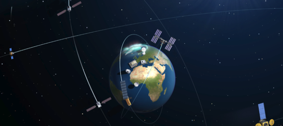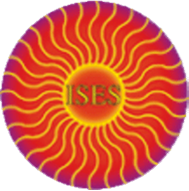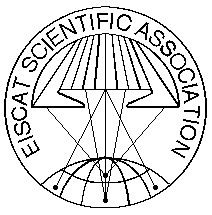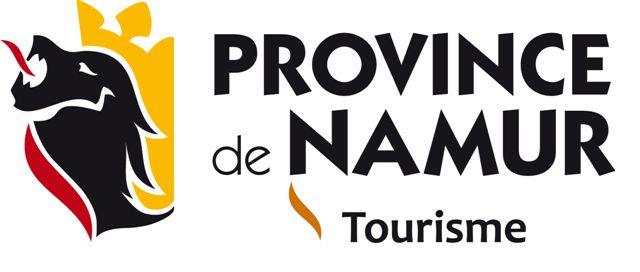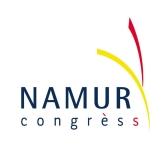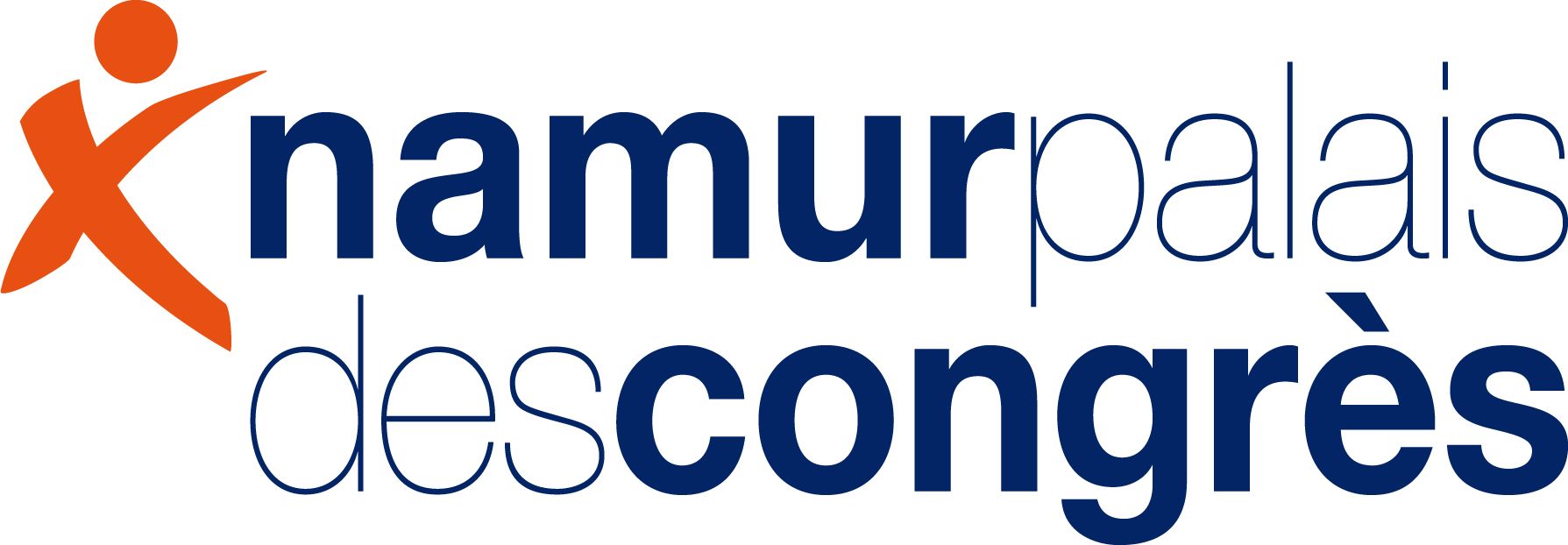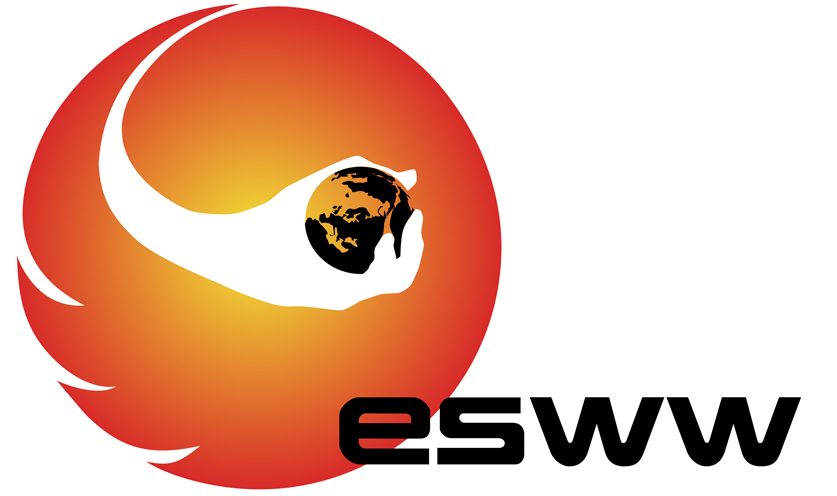
November 28 - December 02, 2011 - Namur, Belgium
Building the European SSA Space Weather Framework
| Session: | Session 2: Building the European SSA Space Weather Framework (02) |
| Type: | |
| Date: | Tuesday, November 29, 2011 |
| Time: | 09:00 - 18:30 |
| Chair: | Paola Chiarini, Alain Hilgers & Mats Ljungqvist |
| Co-chair: | |
| Remarks: |
Splinter Wrap-up: 10:30-10:45 Coffee Break & Poster Session: 10:45-11:15 Lunch Break: 12:30-14:00 Coffee Break: 16:00-16:30 Note: The Working Meeting will run parallel to the afternoon session from 14:00 |
| Sub-session: SSA R&D in Europe | ||||||
| Seq | Time | Title | Abs No | |||
| 1 | 09:00 |
SSA in the EU FP7 Space Theme, Overview of Space Weather Activities
Ljungqvist, Mats The presentation will provide an overview of space weather projects supported in the EU 7th frame work programme for research and technological development. These projects cover a range of topics including science and physics, space weather data exploitation, modelling and forecasting as well as technology development. Some of the projects will be presented in more detail in other presentations later in the same session. Optimising the exchange and cooperation between space weather projects, both EU and ESA funded projects is of increasing importance and will also be discussed in this session. Finally, the presentation will give a brief outlook on future space research funding opportunities in FP7 and the current status of the preparations of the next EU framework programme – Horizon2020. |
||||
| 2 | 09:15 |
Space Weather Segment in the ESA SSA Programme
Luntama, Juha-Pekka; Glover, Alexi ESA, SPAIN ESA Space Situational Awareness (SSA) Preparatory Programme (PP) was started in 2009. The activities in the Space Weather (SWE) Segment of the SSA PP during the first three years have focused on fulfilling the objectives of programme defined in the programme declaration. The declaration especially defines that the activities during the preparatory programme will focus on This paper will present the status of the SSA SWE Segment activities, precursor SWE services and the plans for the final year of the SSA PP. The presentation will also address the plans for SWE Segment for the next phase of the ESA SSA Programme. |
Invited | |||
| 3 | 09:30 |
R&D of Space Weather Instrumentation and Software Tools at ESA
Rodmann, Jens1; Daly, Eamonn2 1ESA/ESTEC; Modis Nederland B.V., NETHERLANDS; 2ESA/ESTEC, NETHERLANDS The European Space Agency is conducting several R&D activities on the next-generation of space-weather instrumentation and software tools. The work is normally done in the framework of various programmes, e.g. General Support Technology Programme (GSTP), Technology Research Programme (TRP), or General Studies Programme (GSP), depending on the level of technical maturity. In this presentation, we will give an overview of ongoing R&D activities at ESA in the domain of space weather. The focus will be on those projects that will be used in the framework of the European SSA Space Weather Segment. Instruments that are currently designed or built are ranging from radiation monitors, plasma instruments, solar imagers and radiometers to magnetometers, microparticles detectors, and GNSS receivers. On the software side, activities on the development of a space-environment modelling infrastructure, a virtual space-weather modelling centre and a network for the processing for space-weather data are conducted. |
||||
| 4 | 09:45 |
Ionospheric research activites in Europe Aylward, A. Atmospheric Physics Lab, University College London, UNITED KINGDOM Europe has a long history of ionospheric research, starting with Appleton's earliest experiments in the 1930's with ionosondes (which has continued to produce the longest continuous ionosonde series in the world). This work continues, with some new initiatives building further on the historic foundations. In particular, northern Scandinavia and Svalbard has a concentration of ionospheric measurements, and EU funding has allowed networks like DIAS and the ATMOP and ESPAS projects to pool expertise further. The data that is collected is used to inform ionosphere and ionosphere-thermosphere models which try to simulate the behaviour of the upper atmosphere. We will look at the data available across Europe and how that informs now-casting and forecasting efforts and ask if there is more that can be done to improve the physical modelling (and hence understanding) of the ionosphere. |
Invited | |||
| 5 | 10:00 |
Effects of Space Weather on Space Systems
McKenna-Lawlor, Susan Space Technology Ireland, Ltd., IRELAND Spacecraft are subject to numerous disturbances due to solar activity, the deleterious effects of which are of concern to spacecraft designers and operators as well as to the 'Man in Space' program. An overview is provided of the onboard problems potentially experienced aboard a spacecraft in orbit close to Earth due to solar activity. Research related to these problems currently being carried out within certain projects funded by the European Union's Framework Program for Research (FP7) are outlined. Also, an account of relevant activities of the Spacecraft Aircraft and Launcher topical group is presnted. |
Invited | |||
| 6 | 10:15 |
Recent GIC-related Initiatives around the World
Trichtchenko, Larisa1; Boteler, David1; Pirjola, Risto2 1Natural Resources Canada, CANADA; 2Finnish Meteorological Institute, FINLAND
Importance of the safety and security of electricity supplies in modern world is hard to overestimate. Thus, socio-economic consequences of the vulnerability of the power grids to the geomagnetic storms make the GIC-research of primary importance, especially in the view of the upcoming increase in solar activity and, thus, increase in the possibilities to have more geomagnetic storms. |
Invited | |||
|
|
||||||
| Sub-session: International Relations | ||||||
| 7 | 11:15 |
ISES Space Weather Services in Europe and Around the World
Lundstedt, Henrik1; Boteler, David2 1Swedish Institute of Space Physics, SWEDEN; 2Natural Resources Canada, CANADA
The delivery of information about space weather conditions goes back to 1928 with the initiation of URSIgram broadcasts from the Eiffel Tower. During the IGY regional warning centres were set up to provide alerts about solar activity for the geophysical monitoring programs. These activities were subsequently combined under the umbrella of what is now called the International Space Environment Service. Since those early beginnings the development of sophisticated technological systems and a growing awareness of their vulnerability to space weather has led to a growth in demand for space weather services. |
||||
| 8 | 11:30 |
WMO ICTSW activities
Zhang, X. National Satellite Meteorological Center National Center for Space Weather, CHINA |
||||
| 9 | 11:45 |
International Aspects of NOAA SWPC Activities
Murtagh, B. NOAA Space Weather Prediction Centre, UNITED STATES |
||||
| 10 | 12:00 |
State Department Engagement with the International Space Weather Community
Head, James United States Department of State, UNITED STATES The United States National Space Policy of 28 June, 2010 emphasizes international cooperation in conducting space activities, citing numerous examples of the global benefits derived thither. The policy directs the Secretary of State "to carry out diplomatic and public diplomacy efforts to strengthen understanding of, and support for, US national space policies and programs and to encourage foreign use of U.S. space capabilities, systems, and services." The State Department is implementing this policy guidance via reinvigorated engagement with the international community. One of the areas well-suited for international cooperation involves both research and operational aspects of space weather. The Office of Space and Advanced Technology (SAT) has responsibility for international aspects of civil space within the State Department. SAT has maintained technical competence in the area of space weather for many years and plans to do so indefinitely. SAT engagement in space weather includes the United Nations, the World Meteorological Organization, and numerous bi-lateral space dialogues. SAT, with NASA, leads the U.S. delegation to the UN Committee on the Peaceful Uses of Outer Space, which has standing agenda items on the International Space Weather Initiative and on the Long-term Sustainability of Space Activities. SAT works with the former to provide in-country embassy support were possible and appropriate. Terms of Reference for the latter, adopted in June 2011, include an expert working group dedicated to space weather. SAT participates in the WMO’s Inter-programme Coordination Team for Space Weather and is becoming involved in the National Weather Service's interactions with the WMO. SAT also provides support for cooperation agreements between NOAA and agencies in other nations. Additionally, SAT is engaging with the European Space Agency on space weather cooperation as part of the broader US-EU space dialogue. Finally, SAT is working within the U.S. Government to craft strategic goals for international cooperation in space weather, with the intent of developing a strategic plan that could be adopted by a large segment of the international space weather community. |
||||
| 11 | 12:15 |
GSFC's Space Weather Center: Services and Collaboration Opportunities
Michael, Hesse1; Pulkkinen, Antti2; Zheng, Yihua2; Maddox, Marlo2; Taktakishvili, Sandro2; Chulaki, Anna2; Mays, Laila2; Kuznetsova, Masha2 1NASA GSFC, UNITED STATES; 2Space Weather Laboratory, UNITED STATES Space research, and, consequently, space weather forecasting are immature disciplines. Scientific knowledge is accumulated frequently, which changes our understanding or how solar eruptions occur, and of how they impact targets near or on the Earth, or targets throughout the heliosphere. Along with continuous progress in understanding, space research and forecasting models are advancing rapidly in capability, often providing substantially increases in space weather value over time scales of less than a year. An optimal forecasting environment needs to be flexible enough to benefit from this rapid development, and flexible enough to adapt to evolving data sources, many of which are from research data sources and/or from partners. This presentation will analyze the experiences obtained by developing and operating both a forecasting service at NASA, and an experimental forecasting system for Geomagnetically Induced Currents. It will conclude with suggestions for avenues toward future progress with an emphasis on international collaborations. |
||||
|
|
||||||
| Sub-session: Networking European Assets | ||||||
| 12 | 14:00 |
Selection of SWE Piggy-back Payloads and Hosting Missions
Pailer, Norbert Astrium GmbH, GERMANY
The main objectives of ESA's Implementation Design study in Phase 1 was the selection of Space Weather SWE instruments needed to cover the Customer Requirements CRs, and a world-wide search for potential hosting missions for piggy-back flight opportunities of these instruments. |
||||
| 13 | 14:20 |
Preparing the Space Weather Services within the SSA Programme: first Steps in SN-I
Reid, Simon RHEA System SA, BELGIUM The ESA contract SN-1: 'Space Weather Segment Precursor Services - Part 1: Definition and Service Consolidation', is one of the first contracts issued in the Space Weather element (SWE) of ESA's Space Situational Awareness (SSA) framework. The project has two principal threads to the work to be performed, one of which is to define the full strategic roadmap for the development of a future integrated system. The system will be based on existing, imminent and planned assets, and will provide a comprehensive suite of Space Weather Services whilst fully satisfying exhaustive System and Service Requirements specifications, as identified to date by ESA and their advisory partners. The international consortium assembled to undertake the SN-I project has compiled a comprehensive database of SWE Assets available within (and beyond) Europe, and performed a detailed review of the SWE Services identified by ESA for the future SSA-SWE system. These two reviews are currently being consolidated in a Services Definition phase, which will lead to a Requirements Specification and Strategic Roadmap for the SWE Services. This process will give a guideline on how the SWE Services can be developed and provided by in the next phases of the ESA SSA Programme. The methodology behind the derivation of the Requirements and the philosophy motivating the Roadmaps will be explained. This will include an outline of how the community can contribute to the overall effort via the assessment plans. This presentation is given on behalf of the SN-I consortium, an international group comprising expertise in Belgium (Royal Observatory of Belgium, Belgian Institute of Space Aeronomy, DH Consultancy, Spacebel SA), Germany (German Aerospace Center (DLR), Etamax), Norway (University of Tromso) and Austria (Kanzelhohe Solar Observatory, Austrian Institute of Technology). |
||||
| 14 | 14:40 |
Space Weather Research at NOA/IAA within the COMESEP FP7 Project: The Solar Energetic Particle Perspective
Malandraki, Olga1; Tylka, A. J.2; Ng, C. K.3; Tan, L. C.1; Marsden, R. G.4; Traquille, C.4; Patterson, D.5; Armstrong, T. P.5; Lanzerotti, L. J.6; Dorrian, G.1; Crosby, N.7 1National Observatory of Athens, GREECE; 2Naval Research Laboratory, UNITED STATES; 3George Mason University, UNITED STATES; 4ESA, ESTEC, NETHERLANDS; 5Fundamental Technologies Inc., UNITED STATES; 6New Jersey Institute of Technology, UNITED STATES; 7Belgian Institute for Space Aeronomy, BELGIUM The Institute of Astronomy and Astrophysics (IAA) of the National Observatory of Athens (NOA) is currently strongly involved in COMESEP, a collaborative project funded by the Seventh Framework Programme of the European Union. COMESEP sets out to develop tools for forecasting Solar Energetic Particle (SEP) radiation storms and geomagnetic storms. It is foreseen that these forecasting tools will be incorporated into an automated operational European Space Weather Alert system, which is the COMESEP primary goal (see poster by Crosby et al., this conference for more details). Basic research on Space Weather (SW) carried out at IAA/NOA within the framework of COMESEP will be presented in this work. Comparative studies of simultaneous SEP observations near Earth (e.g. ACE, WIND) and at Ulysses in 2001 will be presented. We carry out the first detailed examination and comparison of elemental spectra and composition in the late decay phase of the events in the so-called 'reservoir' regions, between spacecraft widely separated in latitude, as well as in longitude and radial distance in the Heliosphere. Implications of the observations for models of SEP transport are also discussed. Furthermore, the study of the impact of the large-scale structure of the Interplanetary Magnetic Field (IMF) on the SEP profiles and its SW implications will be presented, based on the examination of the Pitch Angle Distributions (PADs) of non-relativistic electrons and the inference of the presence of a reflecting boundary of SEPs, resulting to the enhancement of the duration of high-energy proton intensities, causing the so-called "reservoir" effect. These project-related activities will provide the basis for future solar missions such as Solar Orbiter, in which IAA/NOA participates as a Co-Investigator (EPD instrument). The research leading to these results has received funding from the European Union Seventh Framework Programme (FP7/2007-2013) under grant agreement no 263252 (COMESEP) and has also been supported by NASA under grants NNH09AK79I and NNX09AU98G (AJT). |
||||
| 15 | 15:00 |
TRANSMIT: Training Research and Applications Network to Support the Mitigation of Ionospheric Threats
De Franceschi, Giorgiana1; Aquino, Marcio2; Beniguel, Yannik3; Dodson, Alan2; Dovis, Fabio Dovis4; Notarpietro, Riccardo4; Forte, Biagio5; Galas, Roman6; Jakowski, Norbert7; Kos, Tomislav8; Mitchell, Cathryn N.9; Wernik, Andrzej W.10 1Istituto Nazionale di Geofisica e Vulcanologia, ITALY; 2Institute of Engineering Surveying and Space Geodesy (IESSG), University of Nottingham, UNITED KINGDOM; 3IEEA, FRANCE; 4Politecnico di Torino, ITALY; 5University of Nova Gorica, SLOVENIA; 6University of Berlin, GERMANY; 7DLR, GERMANY; 8University of Zagabria, CROATIA; 9University of Bath, UNITED KINGDOM; 10Space Research Center, POLAND TRANSMIT is a Marie Curie Initial Training Network project (PITN-GA-2010-264476). ITNs are part of the FP7 People Programme and aim to improve the career perspectives of researchers who are in the first five years of their research career in both public and private sectors. TRANSMIT will provide a coordinated programme of academic and industrial training in an area of immediate interest to the European society. It focuses on atmospheric phenomena that can significantly impair a wide range of systems and applications that are at the core of several activities embedded in our daily life. TRANSMIT deals with the harmful effects of the ionosphere on these systems, which will become increasingly significant as we approach the next solar maximum, predicted for 2013. It gathers major European stakeholders in a large multisite ITN to develop real time integrated state of the art tools to mitigate ionospheric threats to Global Navigation Satellite Systems (GNSS) and several related applications, such as civil aviation, marine navigation and land transportation. TRANSMIT will expand the European knowledge base and ensure its sustainability by preparing young researchers in a multidisciplinary, intersectorial, industry-led training programme. TRANSMIT will provide a concerted training programme including taught courses, research projects and secondments that will arm the researchers of tomorrow with the necessary skills and knowledge. The project kicked off in Feb/2011 and only recently the recruitment process of the young researchers, namely the TRANSMIT Marie Curie fellows, has concluded. The research training in TRANSMIT involves several technical work packages converging toward one common goal: the development and implementation of a prototype of the IPDM network concept (http://ipdm.nottingham.ac.uk/). The IPDM concept was born in the frame of the COST296 Action with the purpose to detect, monitor and forecast ionospheric threats in a timely and reliable manner to the wider European user community. The TRANSMIT project will be industry led and the final result will be achieved through the coordinated effort of all TRANSMIT partners and in particular through the research carried out by the fellows. This paper gives an introduction to TRANSMIT and its proposed research and training objectives. |
||||
| 16 | 15:20 |
Coupled Models for coupled Physics: Lessons learned in Space Weather Modelling
Lapenta, Giovanni KU Leuven, BELGIUM These are exciting time for space weather research. Several initiatives are ongoing or starting in Europe and world-wide. All major countries involved in space activity and research are actively pursuing space weather research. In particular, space weather modelling and physics-based forecasting are a key aspect considered here. The experience of the United States of America (where the speaker spent most of his research carreer so far) is an especially important example to consider. among the many activities ongoing there, we will focus especially on the CISM (Center for Integrated Space Weather modelling) and CSEM (Center for Space Environment Modelling). What lessons have been learned there, what examples can be followed? Or what mistakes can be avoided thanks to the previous research? I will review some key aspects of the modelling of space weather. Space weather is of course a huge subject involving a large number of different types of processes from the Sun to the Earth. Regions of very different density, temperature, magnetic field intensity and particle populations. The variety of physics and variety of scales is very large. And the various parts of the system and various processes are tightly coupled. How can this challenge be met? The existing expertise and modelling capability, tends to focus on one or few processes in relatively localized parts: e.g. models of the photosphere, or models of the corona or models of the solar wind or of the Earth ionosphere and so forth. Many models exist for the various parts and processes. But the need is felt to join such models in a federated modelling capability. Some models can be coupled more simply in a sort of chain of models to use in cascade (such as for example the solar wind models with the magnetospheric models) but other are tightly coupled both ways and need to operate togatehr (such as ionospheric models with magnetospheric models). The dual challenge is, on the one side, of finding a proper framework to treat multiple physics and multiple scale problems and, on the other, of federating existing software tools into a single forecasting framework. The lessons learned in the USA and in related areas of physics (e.g. plasma simulation for fusion and other applciations) will be used to outline a possible path of most likely success. I will focus, especially, on the three FP7 consortia I coordinate: Swiff (swiff.eu), Soteria (soteria-space.eu) and the new starting eHeroes, and on the space weather activities I coordinate at the Intel Exascience Lab (exascience.com). I especially look forward to feedback from the audience on the possible collaborations and exchanges of information between the groups involved in space weather modelling. |
Invited | |||
|
15:40 Discussion of key issues in networking European assets |
||||||
| 17 | 16:30 |
Advanced Forecast For Ensuring Communications Though Space (AFFECTS) - Objectives and Synergies
Bothmer, Volker1; Verbeeck, Cis2; Van der Linden, Ronald2; Parnowski , Alexander3; Brunner , Raimund4; Hall , Chris5; Jakowski, Norbert6; Borries, Claudia6; Pfeffer , Wilfried7; Onsager , Terry8; Kraupe, Thomas9; Kraupe, Thomas9 1University of Goettingen, GERMANY; 2Royal Observatory of Belgium, BELGIUM; 3Space Research Institute of National Academy of Sciences Ukraine and National Space Agency of Ukrain, UKRAINE; 4Fraunhofer Institute for Physical Measurement Techniques IPM, GERMANY; 5Tromsoe Geophysical Observatory, University of Tromsoe, NORWAY; 6Institute of Communications and Navigation, German Aerospace Center, GERMANY; 7Astrium Satellites GmbH Friedrichshafen, GERMANY; 8NOAA Space Weather Prediction Center, UNITED STATES; 9Planetarium Hamburg, GERMANY The EU FP7 project AFFECTS (Advanced Forecast For Ensuring Communications Through Space) aims at establishing the first European prototype early warning and space weather prediction center with special emphasis on the quantitative forecast of ionospheric conditions and impact of solar superstorms. This way, the prototype system, developed as joint European-US venture, will help reducing the vulnerability of modern technology systems from space weather events at times of the next solar activity maximum to be expected around the years 2012-2013. The presentation summarizes the main goals of the project, its current status and synergies to other EU projects in the field of space weather research and the ESA Space Situational Awareness (SSA) programme. |
||||
| 18 | 16:50 |
Space Radiation Environment Measurements
as by-Product of the Gamma Ray Astronomy
Mission AGILE
Lazzarotto, Francesco1; Costa, Enrico1; Del Monte, Ettore1; Di Persio, Giuseppe1; Evangelista, Yuri1; Feroci, Marco1; Donnarumma, Immacolata1; Pacciani, Luigi1; Rubini, Alda1; Soffitta, Paolo1; Tavani, Marco1; Labanti, Claudio1; Marisaldi, Martino1; Fuschino, Fabio1; Trifoglio, Massimo1; Bulgarelli, Andrea1; Gianotti, Fulvio1; Argan, Andrea1; Trois, Alessio1; Pittori, Carlotta2; Verrecchia, Francesco2; Perotti, Francesco1 1INAF, ITALY; 2ASDC, ITALY
AGILE is an Italian Space Agency mission aimed to the observation
of the Gamma-Ray sources in the universe. The AGILE's instrumentation
combines a gamma-ray imager (GRID) (sensitive in the energy
range 30 MeV-50 GeV), a hard X-ray imager and monitor: Super-
AGILE (sensitive in the range 18-60 KeV), a calorimeter (sensitive in
the range 350 KeV-100 MeV) (MCAL), and an anticoincidence system
(AC), based on plastic scintillator. AGILE was successfully launched
on 2007, April 23 from the Indian base of Sriharikota and was inserted
in an equatorial orbit with low particle background. SuperAGILE
(SA) is an imaging instrument based on a set of four independent silicon
strip detectors, equipped with one-dimensional coded mask, SA is
designed to detect X-Ray signals from known sources and also burst
like signals providing long-term monitoring in terms of flux and spectral
features. Also MCAL can effectively detect high-energy radiation
bursts in it's energy band. Some of the AGILE detected transient
events are associated to positions not consistent with a known source
in the sky (Gamma Ray Burst -GRB-) and they have a
cosmological origin, others are due to Solar Flares and some of them
to Earth Atmosphere events (Terrestrial Gamma Flash -TGF-). |
||||
| 19 | 17:10 |
Importing Plasma Physics of Shock Acceleration to engineering Models of Solar Proton Storms
Vainio, Rami1; Afanasiev, Alexander1; Koskinen, Hannu1; Sanahuja, Blai2; Aran, Angels3 1University of Helsinki, FINLAND; 2Universitat de Barcelona, SPAIN; 3ESA/ESTEC, NETHERLANDS Engineering models of large solar energetic particle (SEP) events are generally either fully empirical probabilistic models, aimed at computing fluxes and/or fluences expected to be encountered during a space mission, or semiempirical models based on fitting of individual events to a particle transport model including a parametrised shock source. In the latter approach, various amounts of physics can be included. So far, the best engineering models constructed based on fitting individual SEP events (in particular, the SOLPENCO model by the University of Barcelona) include dynamical modeling of the evolution of the coronal mass ejection (CME) -driven shock parameters at MHD level, only. The kinetic plasma physics of shock acceleration is handled by introducing a semi-empirical SEP source function at the shock and an ad-hoc model of the turbulent CME foreshock to the SEP transport model. This approach, while verified against a wealth of observations at 1 AU, may have difficulties in predicting the peak fluxes and fluences in other locations in the heliosphere, as the coupled evolution of the source and the foreshock is not based on plasma physics or empirical data. Protecting space assets from high energy particles by developing European dynamic modelling and forecasting capabilities (SPACECAST) is a Collaborative Project funded by the Seventh Framework Programme of the European Union. Within this project, we are investigating the evolution of CME-driven shocks from the kinetic point of view. In particlar, we are using a physical model of shock acceleration that includes an Alfven wave foreshock to obtain a self-consistent description of the evolution of the shock surroundings to be imported in an engineering model of solar energetic particle events. In this paper, we will present the first self-consistent simulations of the shock surroundings and discuss the challenges of how to import the results to engineering models of SEP events. |
||||
| 20 | 17:30 |
The Polar Cap (PC) Indices: Predictors of Substorm and Ring Current Developments.
Stauning, Peter Danish Meteorological Institute, DENMARK
The PC indices represent polar cap magnetic variations driven mainly by the merging electric field of the solar wind-magnetosphere dynamo. The indices are derived from ground based geomagnetic measurements in the northern and southern Polar Caps. The PCN index is based on data from Thule (Qaanaaq) in northern Greenland while the PCS index is based on data from Vostok in Antarctica. Due to their reference to the solar wind electric field, the PC indices are automatically scaled to remove the regular daily, seasonal and solar cycle variations in the ionosphere such that the degree of possible disturbances related to the solar wind impinging on the Earth's magnetosphere and to substorm activity emerge clearly. |
||||
| 21 | 17:50 |
Global Ground Based VLF and ULF Networks for Modeling the Plasmasphere and Space Weather Events - PLASMON
Lichtenberger, Janos1; Clilverd, Mark2; Vellante, Massimo3; Manninen, Jyrki4; Rodger, Craig5; Collier, Andrew6; Jorgensen, Anders7; Reda, Jan8; Holzworth, Bob9; Friedel, Reiner10; Heilig, Balazs11 1Eotvos University, HUNGARY; 2British Antartctic Survey, UNITED KINGDOM; 3University of L'Aquila, ITALY; 4University of Oulu, FINLAND; 5University of Otago, NEW ZEALAND; 6Hermanus Magnetic Observatory, SOUTH AFRICA; 7New Mexico Institute of Mining and Technology, UNITED STATES; 8Institute of Geophysics, Polish Academy of Sciences, POLAND; 9University of Washington, UNITED STATES; 10Los Alamos National Laboratory, UNITED STATES; 11Eotvos Lorand Geophysical Institute, HUNGARY
In the PLASMON FP7-Space (A new, ground based data-assimilative model of the Plasmasphere - a critical contribution to Radiation Belts modeling for Space Weather purposes) project we are extending three existing global measuring networks, that can significantly contributes European SSA Space Weather assets and modeling capability. Two networks, AWDANet measuring VLF whistlers and EMMA measuring ULF FLRs are about to provide near real-time monitoring capability of the densities in the Plasmasphere, while the third network, AARDDVARK monitors precipitating particles from the Radiation Belts through VLF signal perturbations. The ground based density data are integrated into a data-assimilative model of the Plasmasphere, which is in turn used to compare model predictions on relativistic electron precipitations with measured data. |
||||
| 22 | 18:10 |
The Solar Energetic Proton Flux (SEPF) Tool using ESA SREM Data
Sandberg, Ingmar1; Daglis, Ioannis1; Anastasiadis, Anastasios1; Ropokis, George1; Tsalaportas, Panagiotis1; Balasis, George1; Buhler, Paul2; Nieminen, Petteri3; Evans, Hugh3; Daly, Eamonn3 1Institute for Space Applications and Remote Sensing, National Observatory of Athens, GREECE; 2Vienna, AUSTRIA; 3European Space Agency, ESTEC, NETHERLANDS The Institute for Space Applications and Remote Sensing of the National Observatory of Athens (ISARS/NOA) recently released an automated software tool for the monitoring of Solar Energetic Proton Fluxes (SEPF) using measurements of ESA Standard Radiation Environment Monitor (SREM) on-board INTEGRAL, Rosetta, Herschel and Planck. SREM units measures high-energy protons and electrons with a fair angular and spectral resolution. The SEPF tool is based on the automated implementation of the inverse method developed by ISARS/NOA and permits the calculation of high-energy proton fluxes from SREM data. Results of the method have been validated for past solar energetic particle events using measurements from other space-born high-energy proton detectors. The tool unfolds downlinked SREM count-rates, calculates the omni-directional differential proton fluxes and provides results to the space weather community acting as a multi-point proton flux monitor on a daily-basis. In addition, SEPF provides to registered users interactive tools for the visualization of the recorded solar energetic proton events. The fact that several SREM units operate in different orbits provides a unique chance for comparative studies of solar energetic proton events based on multiple data gathered by identical detectors. The SEPF tool is a significant European space weather asset and will support the efforts towards an efficient European Space Situational Awareness programme. The development of the tool (http://proteus.space.noa.gr/~srem/SEPF/) has been supported through the ESA Contract 21480/08/ NL/NR "SREM Solar Particle Event Scientific Analysis".
Sub-session: Posters |
||||

